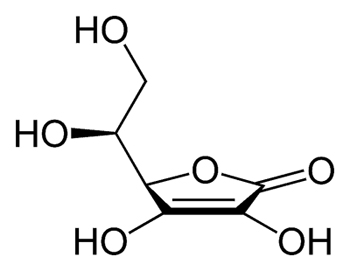February 25, 2008
Vitamin C And Cancer

By Michael D. Shaw
In March, 2006, an exciting article appeared in the Canadian Medical Association Journal that gave case histories of three cancer patients treated with intravenous vitamin C. Clinical trials followed in the wake of the study, and more definitive information is being anxiously awaited. In the interim, let’s examine the subject. Whenever one attempts to discuss a cancer therapy, though, he must do so against a backdrop of a whole lot of baggage…
1. Unlike most diseases, the term “cure” is seldom used to describe a successful outcome. Rather, the cancer is said to be in remission. Generally, it is up to the patient to pronounce himself cured. Actuaries will tend to put a former cancer patient back into the normal risk group if he remains cancer-free at the beginning of the sixth year following the remission, so this milestone can be helpful.
2. Huge amounts of money are involved in treating and researching therapies for cancer. As such, there is an ongoing battle between opposing forces claiming the crown of truth, best practices, and orthodoxy.
3. Despite incredible expenditures, the roster of likely survivable cancers (including Hodgkin’s lymphoma and certain skin cancers) and the roster of the least likely (including pancreatic and liver cancers) remains unchanged after decades.
4. The American public has much higher expectations for their health than they did 50 years ago.
The takeaway from the Canadian study was that IV-vitamin C produces plasma levels 25 times higher than those that can be achieved with oral vitamin C. At such high concentrations, vitamin C is toxic to some cancer cells but not to normal cells in vitro. All three patients in the study had “unexpectedly long survival times” after receiving high-dose IV vitamin C therapy.
Patient 1: Renal cancer was put into complete remission, but about four years later patient was diagnosed with lung cancer, and IV-vitamin C therapy this time was ineffective. She died a year after the second cancer was diagnosed. (51-year-old woman, who first presented in 1995; longtime cigarette smoker)
Patient 2: Nine years after diagnosis, bladder cancer patient in complete remission, and remains in good health. Never took conventional therapy. Along with IV vitamin C, patient took a variety of dietary supplements. (49-year-old man, who first presented in 1996)
Patient 3: Advanced B-cell lymphoma, patient had short course of radiation, but refused chemo. IV-vitamin C therapy given, along with certain dietary supplements. Patient in complete remission for 10 years. (66-year-old woman, who first presented in 1995).
Any discussion of vitamin C therapy should include a few words regarding Linus Pauling. As it happens, the Canadian study came 30 years after the highly-publicized results from Linus Pauling and Ewan Cameron, that claimed beneficial effects for terminal cancer patients with oral vitamin C. However, subsequent clinical trials at the Mayo Clinic failed to show any benefit, and the Pauling/Cameron work has been widely criticized.
There are many—including this author—who believe that Pauling has been vastly overrated, despite his being the only person to win two unshared Nobel prizes. His 1954 prize in chemistry was for “his research into the nature of the chemical bond and its application to the elucidation of the structure of complex substances.” Heady stuff, but bear in mind that Pauling was wrong on his alpha helix approach to the structure of DNA, and very likely stole the alpha helix protein structure idea from a colleague, Herman Branson.
More than that, it seems that Pauling’s ham-handed promotion of vitamin C therapy included the suppression of negative results. Indeed, a longtime collaborator, Arthur Robinson, had to quit his lab when he discovered that in certain cases, vitamin C therapy actually promoted some cancers. Pauling destroyed the animals and the data. It was later determined that in less than megadose amounts, vitamin C might protect the cancer cells from immune system-produced free radicals. Robinson won $575,000 in damages against Pauling.
Following his death in 1994, a litany of less than flattering information has been revealed about Pauling. Conspiracy theorists will no doubt argue that the deconstruction of Pauling occurred because he lined up against conventional medicine and Big Pharma. Yet, the largest contributor by far to Pauling’s Institute of Medicine has been Hoffman-La Roche, a major producer of vitamin C.
In any event, Pauling paved the way for future studies. Being run by conventional docs and researchers who are also open-minded about alternative therapies, the Canadian study gives us hope, as the clinical trials proceed.

